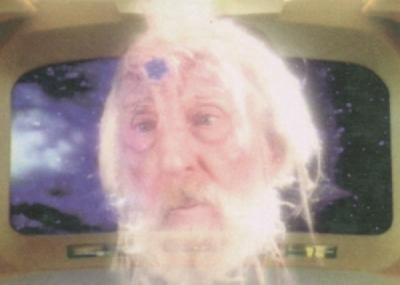
Posted on 01/19/2006 1:53:38 PM PST by djf
A fireball created in a US particle accelerator has the characteristics of a black hole, a physicist has said.
It was generated at the Relativistic Heavy Ion Collider (RHIC) in New York, US, which smashes beams of gold nuclei together at near light speeds.
Horatiu Nastase says his calculations show that the core of the fireball has a striking similarity to a black hole.
His work has been published on the pre-print website arxiv.org and is reported in New Scientist magazine.
When the gold nuclei smash into each other they are broken down into particles called quarks and gluons.
These form a ball of plasma about 300 times hotter than the surface of the Sun. This fireball, which lasts just 10 million, billion, billionths of a second, can be detected because it absorbs jets of particles produced by the beam collisions.
But Nastase, of Brown University in Providence, Rhode Island, says there is something unusual about it.
Ten times as many jets were being absorbed by the fireball as were predicted by calculations.
The Brown researcher thinks the particles are disappearing into the fireball's core and reappearing as thermal radiation, just as matter is thought to fall into a black hole and come out as "Hawking" radiation.
However, even if the ball of plasma is a black hole, it is not thought to pose a threat. At these energies and distances, gravity is not the dominant force in a black hole.
The RHIC is sited at the Brookhaven National Laboratory.
Dirac. Feynman just used the concept in QED.

If the sun went away, it'd get cold real fast.
But I think there is enough internal energy in the planet to last another billion years or so. So we would have to live underground. Very, very far underground!
There was a great scifi story, I think it was Fritz Leiber, called "A Pail of Air".

> You left out the: "It depends on the weight/mass of the core of the blackhole." Part of my statement.
Yes, because it's irrelevant. A lab is not going to create a black hole more massive than the mass of the stuff they're slamming together... in this case, subatomic particles. So, they can make nothign more than a subatomic-mass black hole.
However, even if the ball of plasma is a black hole, it is not thought to pose a threat. At these energies and distances, gravity is not the dominant force in a black hole.
Unless of course, you are a quark or gluon...
LOL. Let that thing hit puberty, and look out.
Robert, you gotta see this. I am LMAO at the comments.
However, even if the ball of plasma is a black hole, it is not thought to pose a threat.
Even so, one should not taunt Happy Fun Ball [Of Plasma].
Quarks and gluons don't "feel" gravity. Quarks feel the strong force, which is carried by gluons.
Why then is the description of the processes called "Feynman Diagrams" if he didn't discover the it? What was his contribution?
Sort of King Midas in reverse.
Feynman diagrams are representations for an interaction. They are a graphical way to determine which path integral(s)(Green's functions) to use when calculating that particular interaction's contribution to the total energy of the system. In general there are many interactions in a quantum system. The vacuum interaction is called the self energy. It represents the system's interaction with the vacuum. In general, that interaction results in slitting of degenerate states(equal energy) into higher and lower energy states around the original degenerate energy of a simple calc.
Dirac postulated the vacuum energy when developing his formalism of QM, by explaining negative energy. Negative E arises, because the E is obtained from a square root operation. He noted that a negative energy particle, (which moves backwards in time), looks like a positive energy particle, of opposite charge, moving forwards in time. The vacuum, he said, was a sea of particles in negative energy states.
"What was his contribution?"
He formulated QED, Quantum Electrodynamics. Quantum mechanics quantizes the particles and treats them separately from fields. QED quantizes the fields and the particles arise out of the fields. QED is a complete theory and gave the first accurate description of the hydrogen atom. Before that, a degeneracy remained in the QM calcs that disappeared in QED. QED accounted for the observed Lamb shift in the H atom, which QM could not. The major reason was the self E of the electron.
Everything responds to gravity. tet68's right the relative distance is large in this case. In fact, Nastase's treats the "gravity" situation as Newtonian. The coulomb force far outweighs gravity here. Pion exchange predominates. It's the pion field(coulomb) that is so dense it looks like a black hole. The region in the center of the fireball contains it and heat flashes off all the energy. That dense pion field is contained in a wave called a soliton. A soliton is a wave that always retains it's shape, including during coliisons.
Nastase's hypothesis is probable, because he calculates 176 MeV for the soliton and the event's "particle" is 176 MeV
!
"All right, everybody out of the pool.." LOL.
I just can't see the logic in shooting perfectly good gold atoms into a black hole.
Heck: the old alchemists were at least trying to make MORE gold than they started with.
(Maxwell's daemon)
Disclaimer: Opinions posted on Free Republic are those of the individual posters and do not necessarily represent the opinion of Free Republic or its management. All materials posted herein are protected by copyright law and the exemption for fair use of copyrighted works.